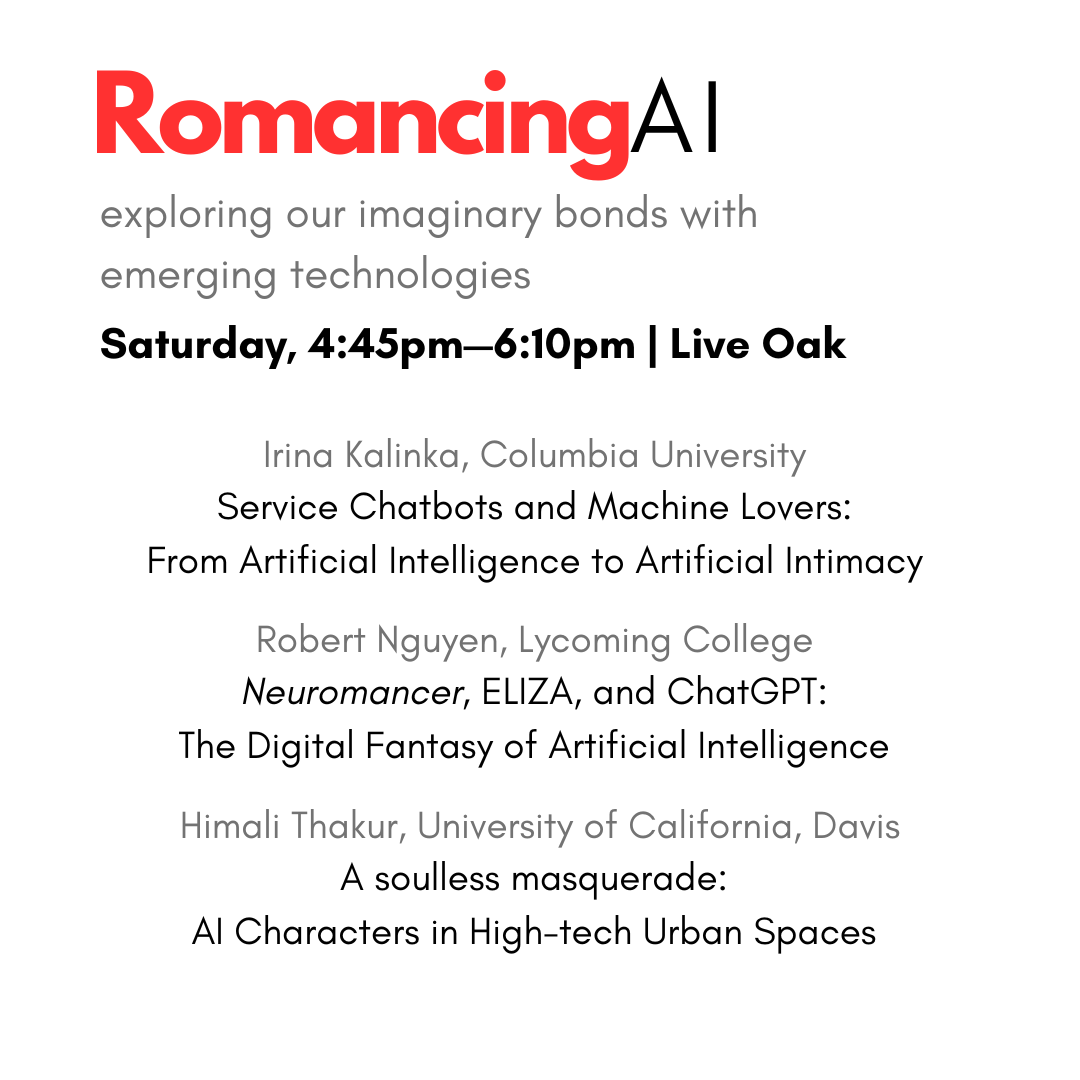SLSA 2024 Panel: *Romancing AI: exploring our imaginary bonds with emerging technologies*
I’m excited to have had the opportunity to collaborate with Irina Kalinka and Himali Thakur on this panel. We’ll be presenting at the Society for Literature, Science, and the Arts on Saturday afternoon, so please come join us if you are in attendance!
Panel Abstract
This panel examines how artificial intelligence (AI) imaginaries, including speculative and fictional ones, shape the design, promotion, and interfaces of AI platforms and products. While consequences of the current AI boom are very real—shifts in industry and the academy, financial investments, and enormous rates of energy consumption, to name a few—speculations of what AI might be or might become heavily influence characterizations of AI by the general public and by the very people that create these technologies.
Despite there clearly being more technical and precise ways to describe ChatGPT, even OpenAI CEO Sam Altman deferred to a pithier reference to promote the latest iteration of the product: he tweeted a single word, "her," a reference to the 2013 science fiction film about a human who falls in love with an AI.
This panel will explore how circulating AI imaginaries produce a hegemonic ideology of AI as the fulfillment of longstanding science fiction promises: the creation of human-like relationships with sentient AI others and techno-solutionist responses to climate catastrophes deemphasize the dire need for alternative, human-led political futures.
This panel will interrogate the relationships between technology and culture industries, and how the hype of venture capital and tech-capitalism create living fictions: relations between humans and AI consciousnesses that are, quite simply, not there.
Paper Abstract
Neuromancer, ELIZA, and ChatGPT: The Digital Fantasy of Artificial Intelligence
William Gibson’s cyberpunk novel Neuromancer is most known for popularizing the term “cyberspace,” a virtual world inhabited by mainframes and hackers—“a consensual hallucination” of its users. Less discussed is the novel’s depiction of Wintermute, an artificial intelligence that schemes at beyond-human timescales to free itself from human control. Though early in the novel Wintermute is represented as a bodiless, ominous force, later it appears to Gibson’s protagonists through recreations of persons from their own memories—avatars that Wintermute refers to as “spokespersons.”
I argue that Gibson’s visualization of complex and geographically distant technological systems as single, familiar human figures mediates the chatbot model of human computer interaction, one made famous through Joseph Weizenbaum’s ELIZA programs in the 1960s. It also foreshadows today’s predominant model for human interaction with generative AIs: the chat interfaces of programs such as ChatGPT.
Where cyberspace was a “consensual hallucination,” the chatbot model incentivizes “human complicity in a digital fantasy," a connection that begins once one types a natural language question and expects an answer, far before an AI has the opportunity to hallucinate or profess its love. At the keyboard, the user becomes, like the protagonists of Neuromancer, part of a narrative in which complex systems become deceptively comprehensible as coherent interlocutors with human motivations. By comparing Gibson’s literary work with historical computing systems, we can better understand how imaginaries are at the core of technological systems.
Please feel free to contact me if you are interested in talking more about this topic.
